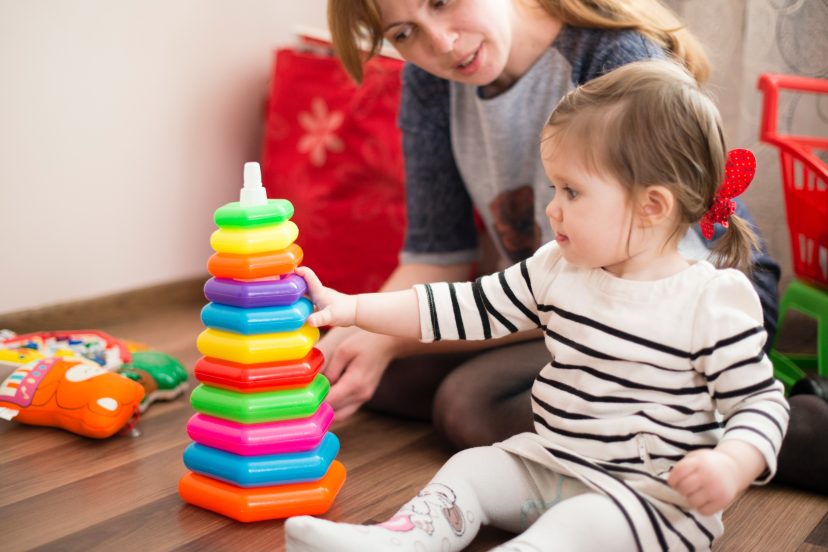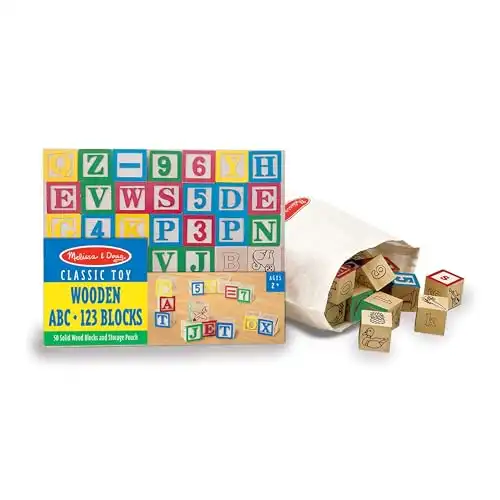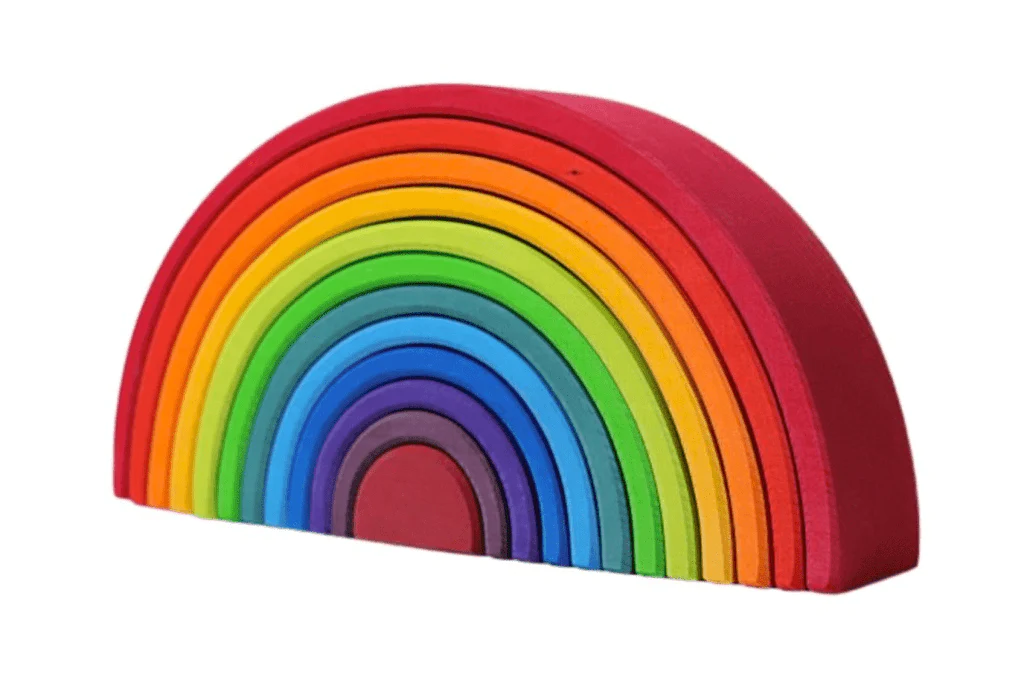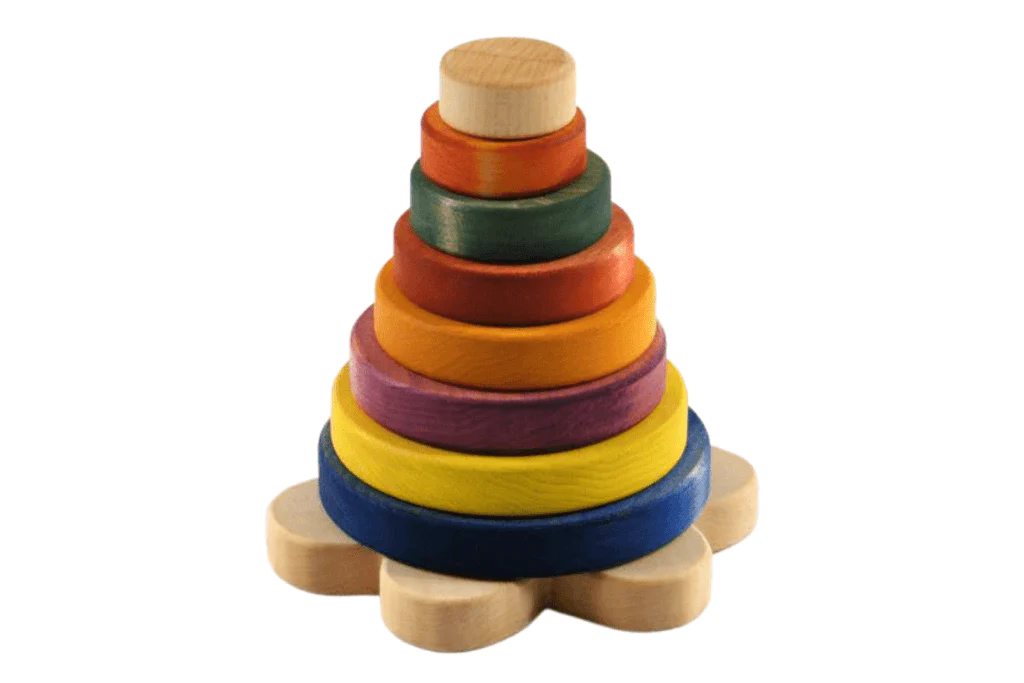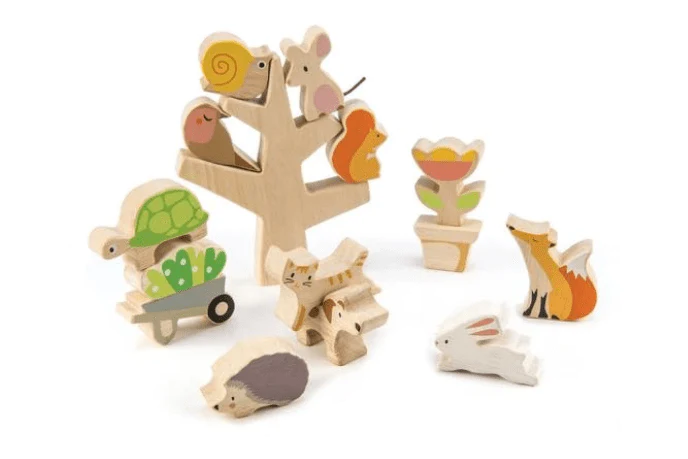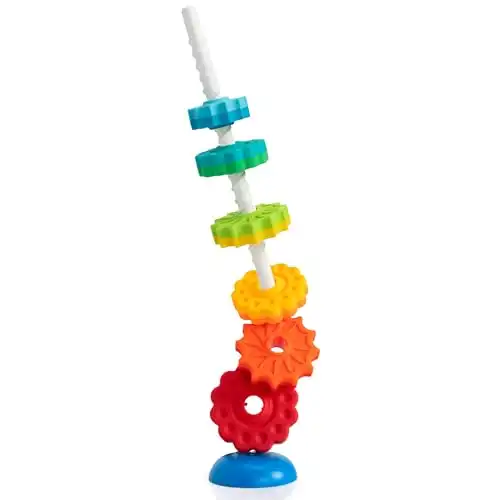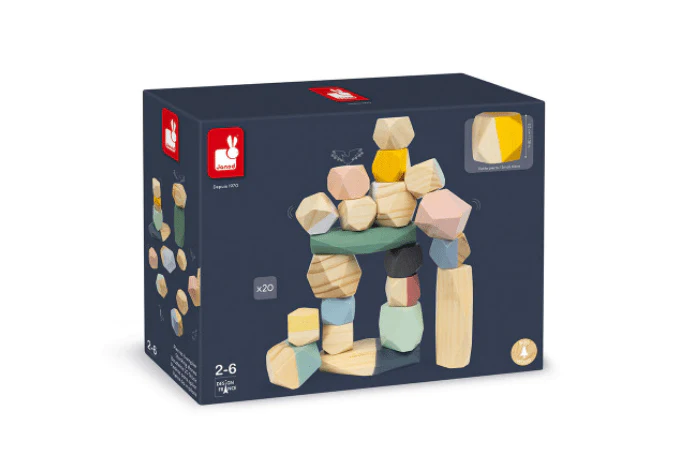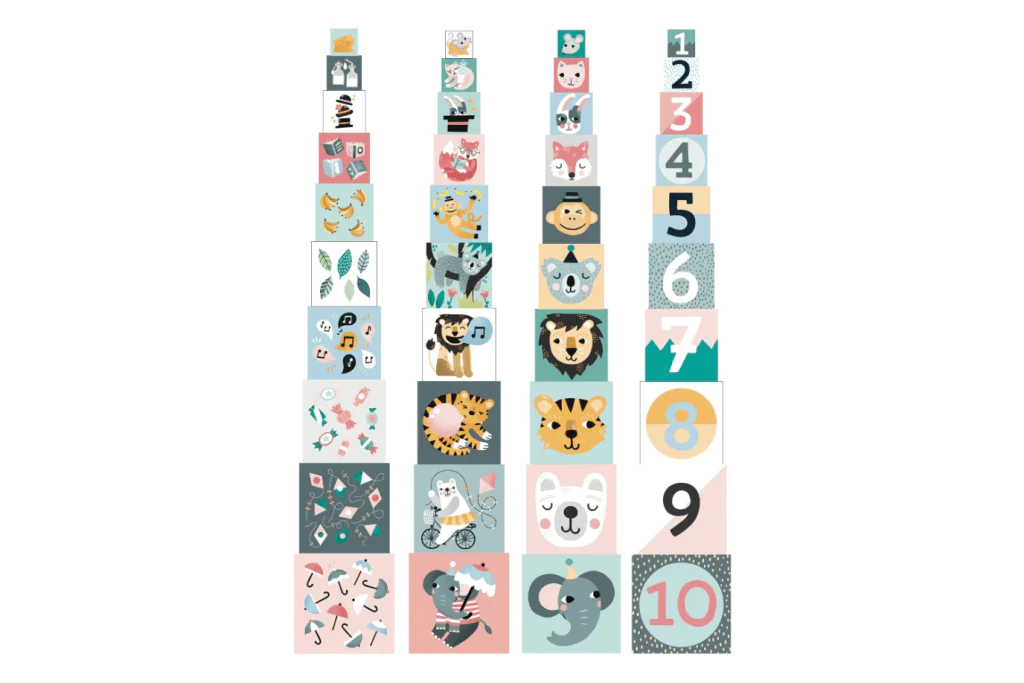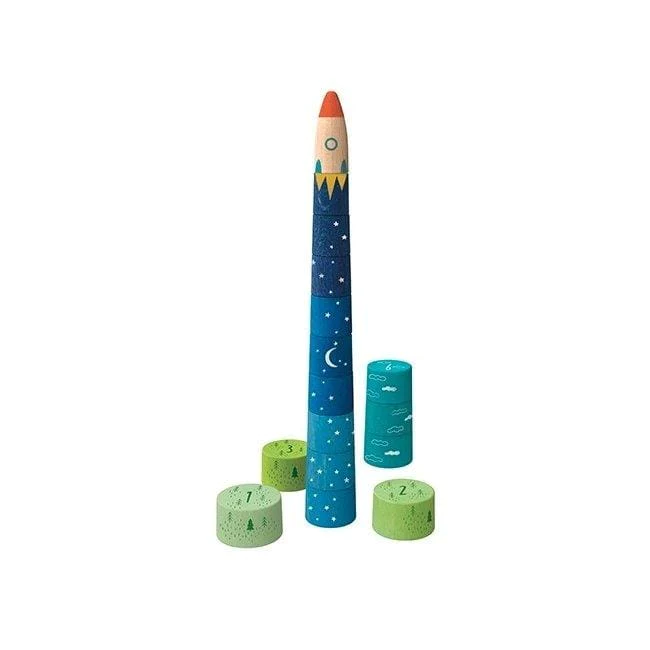Stacking Toys for Toddlers: Enhancing Motor Skills and Cognitive Growth Though Play
Raising 2 boys, I’ve seen first hand the impact stacking toys can have on a child’s development. They are more than just a simple construction toy; they are tools that aid in the growth of children. In this article, I’ll look at the benefits of stacking toys for toddlers and how they contribute to the growth of your kiddos, as well as highlighting some of the best toys on the market.
Table of Contents
Understanding Stacking Toys For Toddlers
Stacking toys, as the name suggests, are designed to be stacked, one over the other, in a specific order or sequence. They are a type of construction toy and can come in various shapes, sizes, and colors, ranging from simple stacking rings toys to more complex pieces. They are made from different materials like wood, plastic, or fabric, each offering a unique sensory experience.
Unlike standard toys, stacking toys challenge kids to think, plan, and execute. They are not just about putting one piece over another; they require thought and strategy. This unique attribute makes them stand out and provides a range of benefits.
What Are The Benefits Of Stacking Toys
Enhance Cognitive & Eductaional Skills
Stacking toys play a key role in building problem-solving skills in toddlers. As they attempt to balance and arrange the pieces, they face challenges that require them to think critically and find solutions, fostering early problem-solving abilities—a skill that is essential throughout life. At the same time, these toys help develop spatial awareness. By figuring out how the pieces fit together, children gain a better understanding of space, which lays the foundation for grasping more complex concepts in math and science as they grow.
They also introduce toddlers to basic math concepts like size, shape, order, and quantity in an intuitive and engaging way, providing an early foundation for STEM learning and future academic success. In addition, these toys often feature vibrant colors and various shapes, helping children recognize and name them, which is a crucial aspect of early cognitive development.
Promoting Physical Development
Stacking toys offer an excellent opportunity for toddlers to improve their hand-eye coordination as they pick up, position, and stack each piece. In addition, stacking toys enhance both fine and gross motor skills. The small, precise movements needed to pick up and place the pieces help develop fine motor skills, while gross motor skills are engaged when children reach, stretch, and balance as they build their creations.
Boosting Emotional and Social Growth
Stacking toys encourage the development of patience and perseverance in children. As toddlers attempt to stack and balance the pieces, they quickly learn that success often requires multiple attempts, helping them build determination and resilience. Additionally, when played in a group, they help foster social interaction and sharing. Children learn to share pieces, take turns, and engage in cooperative play, laying the groundwork for healthy social skills and positive interactions with others.
Stimulate Creativity and Imagination
Stacking toys encourage creative play by opening a world of imagination for toddlers. They’re not just stacking blocks; they’re building towers, castles, or whatever their minds can dream up, fostering open-ended play that is vital for creative thinking and problem-solving later in life. Additionally, as children stack, they often create imaginative scenarios and narrate stories, which enhances their storytelling skills. This not only boosts their creativity but also supports language development and emotional expression.
Our Top Picks For Stacking Toys For Toddlers
Delving deeper into the world of play and development, let’s explore some Top Picks for Stacking Toys for Toddlers. Hopefully they will help you find the perfect options for your little one’s growth and enjoyment.
Grimm’s Montessori Stacking Rainbow
This best selling Montessori Toy is incredibly versatile; allowing kids to stack, sort and build. Made from lime wood and non toxic water based colour stain, your children can let their imaginations run wild. They can use the peices in a whole host of creative ways.
Classic Montessori Wooden Stacking Toy
This toy helps children to develop the grasp and hand eye coordination. It also introduces them to the concept of sequence and size, as they learn to sort and stack the rings from largest to smallest.
Initially, they will spend their time figuring out how to remove the rings. As they grow they will begin to show more of an interest in stacking the rings onto the dowel
Stacking Garden Friends
This adorable stacking toy is made from solid wood and painted with cute garden motifs. Try getting your toddler to stack them all up on the tree without them falling down!
This game encourages logical thinking, inspires imaginative play, tests patience, develops problem solving skills and enhances fine motor skills.
Fat Brain Spin Again Corkscrew Stack-and-Sort Toy
This is a stacking toy with a spin—literally! Thread the discs onto the pole and go ooooh as they spin fast and smooth to settle onto the reversible base. Choosing how to set the base is half the fun for your toddler.
Pick either the wobble base or turn it over for a solid seat. Each disc is dual colored, and from largest to smallest. They form a rainbow using fun shades like magenta, lime sky blue and teal.
Cocoon Stacking Stones
These are not your average wooden block set. This construction toy gives free rein to the imagination and develops concentration, building skills, and fine motor skills.
Includes 20 wooden stones, with different shapes and cutouts. They are the perfect size and the unique shapes provide a lot of tactile feedback.
Stacking and Nesting Cubes
These beautiful stacking cubes will draw your child to the pictures of the animals, objects, and numbers. Stack them vertically, lay them flat or nest them inside one another!
Up to the Stars Stacking Game
Children will learn about balancing objects, resilience, and problem solving by stacking these wooden blocks in numerical order from 1 to 16.
Can you help this rocket cross mountains, clouds, and parts of the sky to reach the stars?
Integrating Stacking Toys into Daily Play
Creative Play Ideas
To keep play with stacking toys engaging and beneficial, you can introduce creative challenges or set specific goals for your toddler. For example, ask them to stack the toys in a certain order, by size, color, or shape, or challenge them to create specific structures, like a tower or a bridge. These simple prompts add an extra layer of learning, enhancing their problem-solving and critical-thinking skills. They also introduce a sense of accomplishment when the task is completed, boosting your toddler’s confidence.
You can also use themed play scenarios to spark their imagination. For example, pretend the stacked blocks are part of a city or a playground for their toys. These imaginative prompts encourage open-ended play, keeping their interest alive while reinforcing key concepts like balance, size, and shape.
Engaging with Your Toddler
Family fun time is not only great for bonding but also provides a rich opportunity for guided learning. Playing alongside your toddler gives you the chance to introduce new concepts in real time, such as counting, color recognition, or shape identification, while also helping them correct mistakes in a supportive way. For example, when a tower falls, you can gently guide them through problem-solving techniques to rebuild it. Encouraging your toddler to explore, experiment, and learn from their play enhances their curiosity and reinforces their development.
It’s also a chance to instill patience and perseverance by showing how to handle frustration when things don’t work out. Your presence and engagement during playtime make it more enjoyable and rewarding for both of you.
The Role of Parents In Encouraging Play
Guided Play Sessions
We play a crucial role in shaping the play experience for our toddlers. By setting up creative scenarios or challenges, we can guide their exploration and problem-solving in a way that’s both fun and educational. These guided play sessions allow us to introduce concepts such as balance, symmetry, and spatial reasoning, helping children build foundational skills through play. Offering positive reinforcement and gentle guidance encourages a sense of achievement, helping your toddler feel more confident in their abilities.
Structured play sessions can also help establish a routine, where your child looks forward to stacking toy activities as a fun learning opportunity. Creating a playful and stress-free environment encourages your child to experiment and learn at their own pace.
Observing and Supporting Development
Observing how your toddler interacts with stacking toys provides valuable insights into their developmental stage and preferences. You might notice if they are naturally inclined toward certain shapes or colors, or how they handle the challenge of balancing pieces. By closely observing their play, you can adapt future play sessions to meet their developmental needs, whether that means introducing more advanced challenges or focusing on fundamental skills.
This observation also allows you to celebrate their achievements and progress, which builds self-esteem. Tailoring activities to your child’s developmental stage ensures the play remains beneficial and fosters growth at a comfortable pace.
Closing Thoughts From Me
Stacking toys for toddlers are more than just playthings; they are essential tools in a toddler’s development. These toys help with thinking skills, creativity, and emotional growth, setting the stage for lifelong learning and development. Parents and caregivers can help children by promoting the use of stacking toys during their early years.
FAQs
What age is appropriate for stacking toys? Stacking toy blocks are suitable for toddlers as young as 6 months old, with more complex versions appropriate for older toddlers.
Can stacking toys help with my toddler’s speech development? Yes, through storytelling and imaginative play, stacking toy blocks can aid in language development and expansion.
How often should my toddler play with stacking toys? Using construction toys daily can provide ongoing developmental benefits, but balance with other types of play is key.
Are plastic stacking toys safe for toddlers? Yes, as long as they are made from non toxic materials and are age appropriate in size to avoid choking hazards.
Can stacking toy blocks prepare my child for school? Absolutely. They help kids learn problem solving, spatial awareness, and basic math skills, which are important for getting ready for school.

